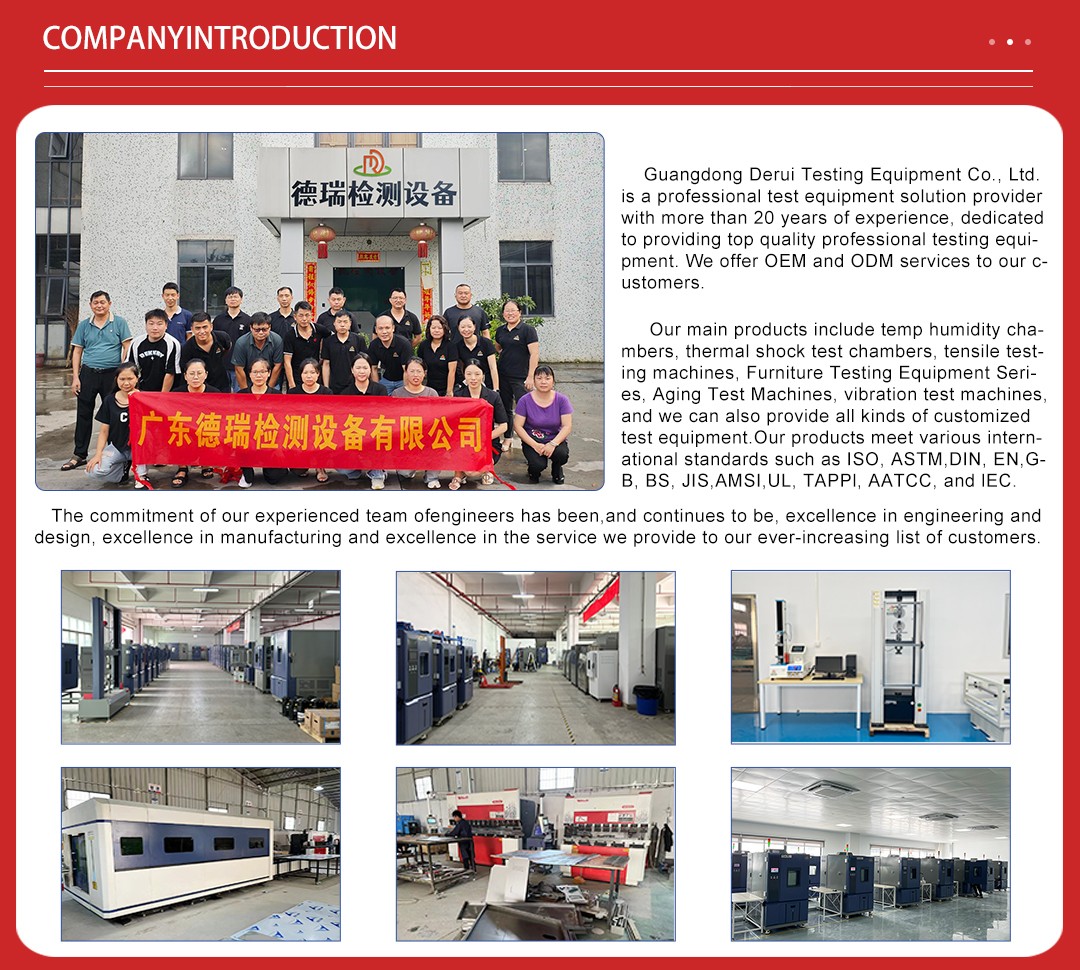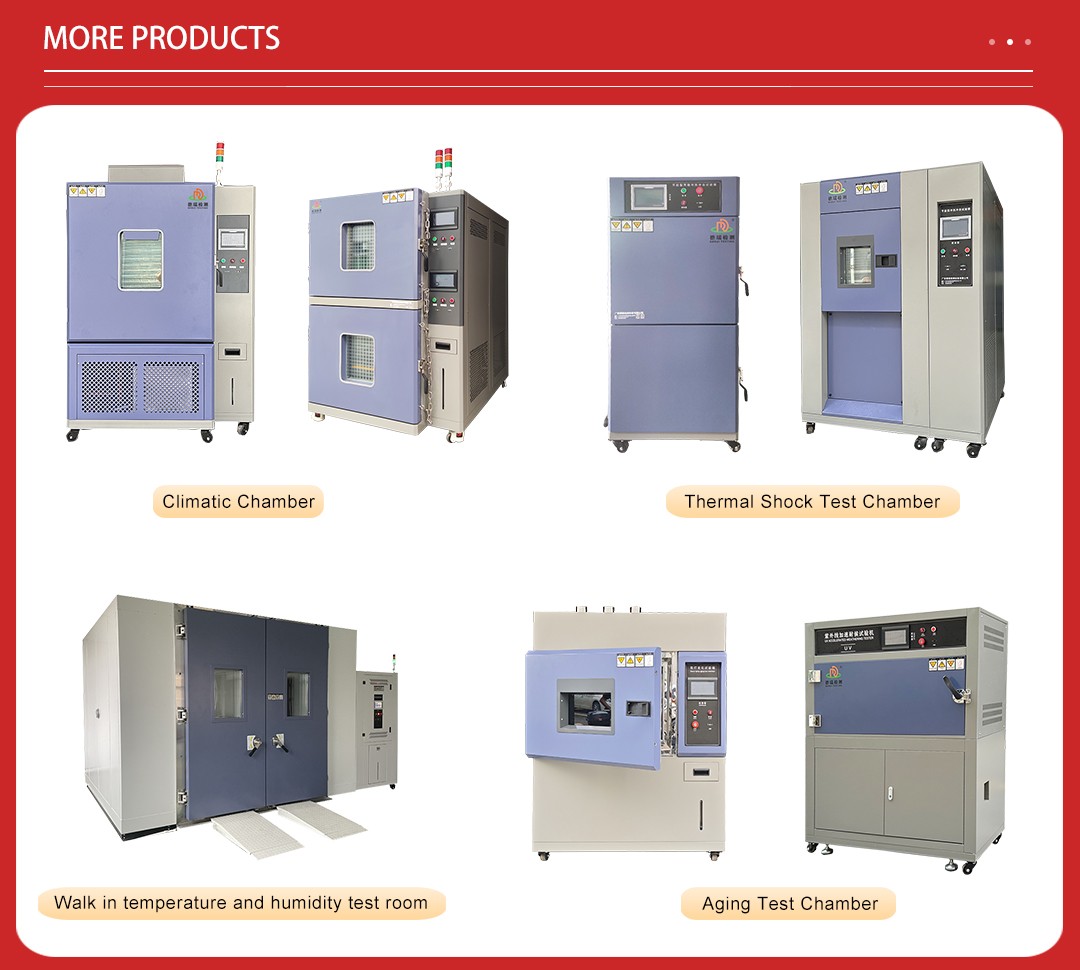
In materials science, the ability to test and predict the behavior of materials under extreme and varying thermal conditions is crucial for ensuring their performance, durability, and safety. The Rapid Temperature Cycling Chamber is an advanced testing instrument designed specifically for this purpose. It subjects materials to rapid and controlled temperature changes, simulating real-world environmental stresses and accelerating the identification of potential weaknesses or failures.

The rapid temperature cycling chamber plays a vital role in materials testing across various industries:
- Aerospace and Defense: Evaluating the durability and reliability of materials used in aircraft, spacecraft, and military equipment, where extreme temperatures and rapid thermal changes are common.
- Automotive Industry: Assessing the performance of automotive components, such as engine parts, electronics, and coatings, to ensure they can withstand the thermal stresses encountered during operation.
- Electronics Manufacturing: Testing electronic components, PCBs, and semiconductors to ensure they function reliably under varying thermal conditions, enhancing product longevity and safety.
- Construction and Infrastructure: Evaluating building materials, such as concrete, steel, and polymers, to ensure they can withstand the thermal cycles experienced in different climates.
- Renewable Energy: Assessing the durability of materials used in solar panels, wind turbines, and energy storage systems, ensuring reliable performance in diverse environmental conditions.

To ensure reliability and repeatability, the rapid temperature cycling chamber adheres to several international standards, including:
- ISO 6270-2: Environmental testing — Part 2: Temperature change.
- IEC 60068-2-14: Environmental testing — Part 2-14: Tests — Test N: Change of temperature.
- ASTM D6604: Standard Practice for Cyclic Temperature Testing of Polymeric Matrix Composite Materials.
- SAE J1455: Automotive Electronic Equipment Environmental Test Standards.
- MIL-STD-810G: Environmental Engineering Considerations and Laboratory Tests.

- Wide Temperature Range: Capable of operating from -80°C (-112°F) to +200°C (+392°F), the chamber can simulate a broad spectrum of thermal conditions.
- Ultra-Rapid Temperature Transition: With transition rates up to 30°C per minute, it accurately replicates the rapid temperature changes encountered in real-world scenarios. - Precision Control: Advanced PID (Proportional-Integral-Derivative) controllers ensure highly accurate and stable temperature and humidity levels, with deviations typically within ±0.5°C and ±2% RH.
- Humidity Management: Integrated humidity control systems can generate relative humidity levels from 10% to 98%, enabling tests in both dry and humid conditions.
- Data Acquisition Systems: Equipped with state-of-the-art data logging and monitoring systems, the chamber provides real-time tracking of temperature, humidity, and material parameters, facilitating detailed post-test analysis.
- Robust Construction: Built from corrosion-resistant materials like stainless steel, the chamber is designed to withstand harsh testing environments and ensure long-term durability.
- Safety Features: Advanced safety mechanisms, including over-temperature protection and emergency stop buttons, ensure operator safety and prevent damage to test specimens.

| Model | DR-H204-100 | DR-H204-150 | DR-H204-225 |
| Internal dimension | 400*500*500mm | 500*600*500mm | 600*750*500mm |
| External dimension | 750*1536*1310mm | 750*1636*1410mm | 850*1786*1410mm |
| Temperature(℃) | -20/-40/-70 | -20/-40/-70 | -20/-40/-70 |
| Maximum Current(A) | 22,22,28 | 22,22,28 | 18,18,23 |
| Voltage(V) | Single-phase220V | Single-phase220V | Three-phase380V |
| Temp,range | 0℃;-20℃;-40℃;-70℃~+150℃ |
| Test Method | Pneumatic Operated Door Switch(two/three-zone) |
| Temp.Display Accuracy | 0.01℃ |
| Temp.uniformity | ≤±2.0℃ |
| Temp.deviation | ±0.5℃~±0.2℃(without load) |
| Heating speed | 1℃/min~20℃/min,can be customized |
| Cooling Speed | 1℃/min~20℃/min,can be customized |
| Humid.range | 20%~98%RH |
| Humid.resolution | 0.1% R.H. |
| Humid.uniformity | ±3%RH(without load) |
| Internal chamber material | Stainless steel 304 |
| External chamber material | Stainless steel/paint spray |

Working Principle
The rapid temperature cycling chamber operates by exposing materials to a series of precisely controlled temperature cycles, which can be customized to mimic various environmental conditions. The process involves:
1. Initial Conditioning: The chamber heats or cools to a specified setpoint using high-efficiency heating elements or refrigeration units. This initial conditioning phase ensures that the material reaches the desired starting temperature.
2. Steady-State Exposure: Once the target temperature is achieved, the material is held at this temperature for a predetermined duration. This allows the material to fully acclimate to the new thermal environment.
3. Rapid Transition: The chamber then rapidly transitions to the opposite extreme, either cooling or heating, depending on the initial state. Transition rates can reach up to 30°C per minute, simulating the thermal shocks experienced in real-world applications.
4. Cycle Repetition: The temperature cycle repeats multiple times, subjecting the material to extensive thermal stress. This process helps identify any material degradation, expansion, contraction, or other thermal-induced effects.
5. Optional Humidity Control: For comprehensive testing, the chamber can introduce humidity, allowing for the assessment of material performance in both dry and wet environments.
Operation Procedure
1. Preparation: Place the material sample inside the chamber and secure it to prevent movement during testing. Connect any necessary sensors or wiring for data collection.
2. Parameter Setup: Using the control panel, input the desired temperature, humidity, and cycle duration. Ensure all safety checks are completed.
3. Start Testing: Initiate the test cycle. The chamber will automatically adjust its environment according to the programmed parameters.
4. Monitoring: Continuously monitor the test progress through the data acquisition system. Adjust settings if necessary to maintain optimal conditions.
5. Completion and Analysis: Upon completion, retrieve the material sample and analyze the results. Review logged data for any anomalies or performance issues.
Application Cases
1. Thermal Fatigue Testing: Manufacturers use rapid temperature cycling chambers to evaluate the thermal fatigue resistance of materials, identifying potential failure points and improving product design.
2. Material Expansion and Contraction: Researchers study how materials expand and contract under thermal stress, optimizing designs to minimize structural integrity issues.
3. Corrosion Resistance: Engineers assess the corrosion resistance of materials in humid environments, ensuring they can withstand prolonged exposure to moisture and temperature fluctuations.
4. Adhesive and Sealant Performance: Developers test adhesives and sealants to ensure they maintain their bond strength and integrity under extreme thermal conditions, critical for applications in aerospace and automotive industries.
In summary, the Rapid Temperature Cycling Chamber is an indispensable tool for materials testing laboratories. Its advanced features, precise control, and adherence to industry standards make it an essential asset for ensuring the quality, durability, and safety of materials across a wide range of applications. By subjecting materials to rapid and controlled temperature cycles, researchers and engineers can accelerate the development of innovative and reliable products, ultimately leading to safer and more efficient technologies.










